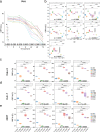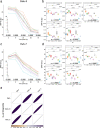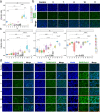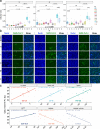Patient-derived SARS-CoV-2 mutations impact viral replication dynamics and infectivity in vitro and with clinical implications in vivo
- PMID: 33298872
- PMCID: PMC7595057
- DOI: 10.1038/s41421-020-00226-1
Patient-derived SARS-CoV-2 mutations impact viral replication dynamics and infectivity in vitro and with clinical implications in vivo
Abstract
The severe acute respiratory syndrome coronavirus 2 (SARS-CoV-2) has spread globally with more than 33 million patients diagnosed, taking more than a million lives. Abundant mutations were observed but the functional consequences of these mutations are largely unknown. We report the mutation spectrum, replication dynamics, and infectivity of 11 patient-derived viral isolates in diverse cell lines, including the human lung cancer cell line Calu-3. We observed 46 mutations, including 9 different mutations in the spike gene. Importantly, these viral isolates show significant and consistent variations in replication dynamics and infectivity in tested cell lines, up to a 1500-fold difference in viral titers at 24 h after infecting Calu-3 cells. Moreover, we show that the variations in viral titers among viral isolates are positively correlated with blood clotting function but inversely correlated with the amount of red blood cell and hemoglobin in patients. Therefore, we provide direct evidence that naturally occurring mutations in SARS-CoV-2 can substantially change its replication dynamics and infectivity in diverse human cell lines, with clinical implications in vivo.
Conflict of interest statement
The authors declare that they have no conflict of interest.
Figures






References
LinkOut - more resources
Full Text Sources
Miscellaneous

